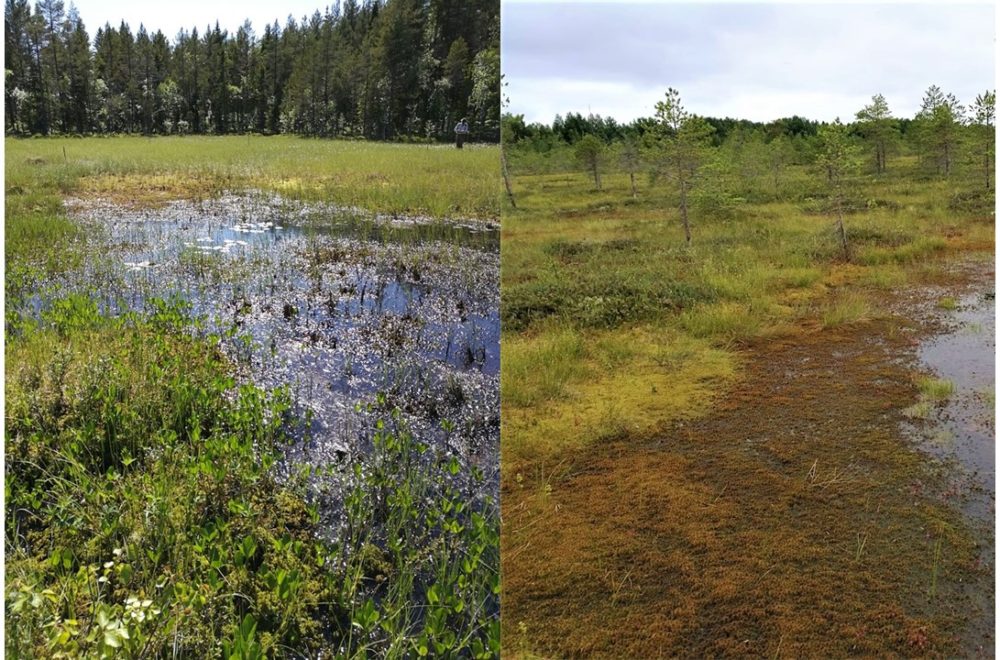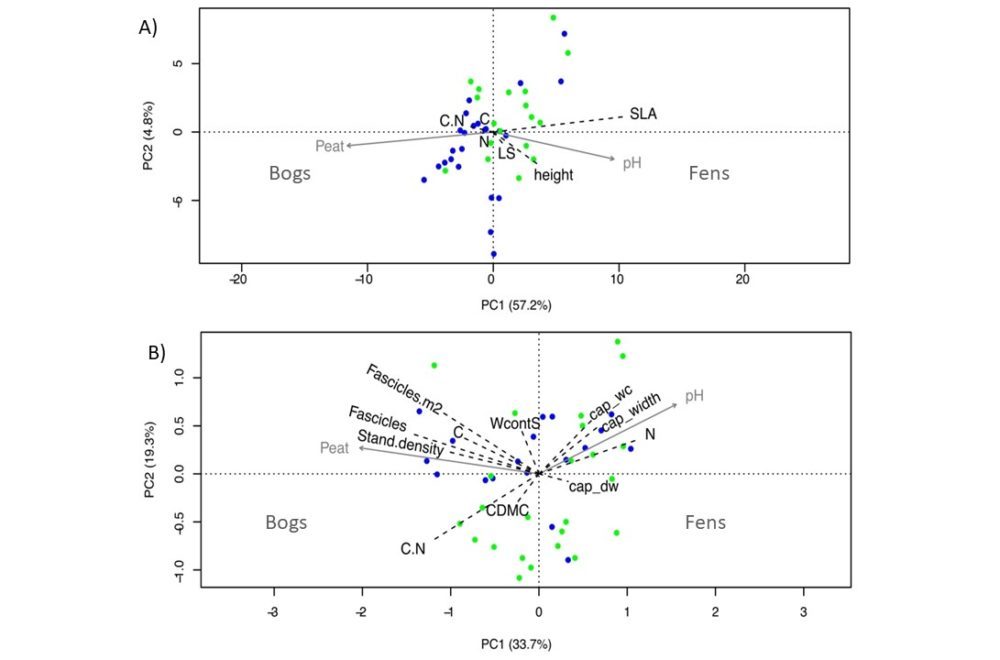Science Blog: Vegetation characteristics can help us to understand the future behaviour of peatland functions
Peatlands are globally amongst the most significant soil carbon reservoirs. As the carbon reservoir builds up and the peat layer grows in thickness during thousands of years, peatland vegetation also goes through a change. Which plant species dominate the peatland vegetation is essential for carbon sequestration, as plants capture carbon in photosynthesis. With global warming currently changing peatland vegetation and carbon cycling, we might be able to predict the future by learning more about the plants. Our study implies that peatland type matters and that the functions of older peatlands, namely bogs, are less prone being impaired by environmental change, such as global warming.
Peatland vegetation and carbon accumulation
Peatlands form a significant carbon storage, but due to anthropogenic actions and climate change, the rate of carbon (C) accumulation is expected to decrease. C-accumulating pristine peatlands are not a homogeneous ecosystem type but vary in their vegetation and environmental conditions. As peatland develops over thousands of years, the relative proportion of vascular plants and Sphagnum mosses in the plant community changes, peat depth increases and pH decreases, and all this impacts on the level and resilience of C sequestration. Trait‐based ecology, with a focus on quantitative plant properties or “traits” such as plant height or leaf nitrogen content, offers tools for mechanistic understanding of how vegetation responds to changes in environmental conditions, and how vegetation change impacts on ecosystem functions. Currently, little is known about the successional development of plant traits or functional diversity of these traits in peatlands, although this could be key to understanding the resistance of peatland C accumulation to climate change.
The successional stages of peatlands offer an outdoor laboratory of peatlands with plants that have very different traits and responses to environmental change. We used such a setup to gain a glimpse of how the functionality of successive plant communities changes and what makes a peatland resistant to climate change. We collected plant community and trait data along successional peatland gradients from post‐glacial rebound areas in coastal Finland, Sweden and Russia, altogether from 47 peatlands. This allowed us to analyse the changes in trait values and functional diversity (diversity of traits) during peatland development.
Development of plant traits and plant community resistance
Our results demonstrated a trait trade‐off from acquisitive (fast-living, productive plants) to conservative (stress-tolerant, slow-growing) species in both vascular plant and Sphagnum moss communities during peatland development from early successional sedge-covered fens to nutrient-poor Sphagnum-dominated bogs. Such a trait trade‐off is generally linked to ecosystem functions so that the communities with acquisitive species have higher productivity, while high litter accumulation and soil C accumulation are characteristic of communities with conservative species. This supports the view that older bogs have lower productivity but nevertheless also greater net C sequestration than younger fens. With our trait dataset, we were also able evaluate what makes carbon sequestration by bogs more resistant to changing weather conditions compared to fens. We observed that the differences are connected to the existence of a well-developed Sphagnum moss community, which increases the resistance of peatland to environmental changes compared to communities dominated by vascular plants. Sphagnum moss traits showed higher within-species variation than vascular plant traits, and in addition, we found increasing functional diversity in Sphagnum communities during peatland succession, while functional diversity in vascular plant communities was higher in fens. Both within-species trait variability and the existence of functionally different species in a community increase the resistance of ecosystems to perturbations.
Conclusions
Climate change may have a major effect on the carbon accumulation of peatlands by changing the vegetation composition. If Sphagnum mosses persist as an elemental part of the plant community or manage to replace the fen vegetation as peatland succession proceeds, the current rate of C accumulation may continue. However, if climate change results in large‐scale shrubification at the expense of mosses, the reduced resistance of peatland may to lead to a decrease in peat accumulation.
Reference
Laine, A. M., Lindholm, T., Nilsson, M., Kutznetsov, O., Jassey, V. E., & Tuittila, E. S. 2021. Functional diversity and trait composition of vascular plant and Sphagnum moss communities during peatland succession across land uplift regions. Journal of Ecology 19, 1774-1789. Available at: https://doi.org/10.1111/1365-2745.13601


Text: Anna Laine-Petäjäkangas
Dr Anna Laine-Petäjäkangas is a Senior Scientist in the Environmental Solutions unit, specializing in peatland carbon cycle-related aspects. She has worked at the Geological Survey of Finland (GTK) since autumn 2020. Before that, she led a project funded by the Kone Foundation on the successional development of peatland plant traits at the University of Oulu. She is currently focusing on land use and environmental change impacts on peatland carbon storage and is the manager of GTK work of the consortium project “Wind, forests and peatlands – Transformation through land use to a C-neutral society.”
